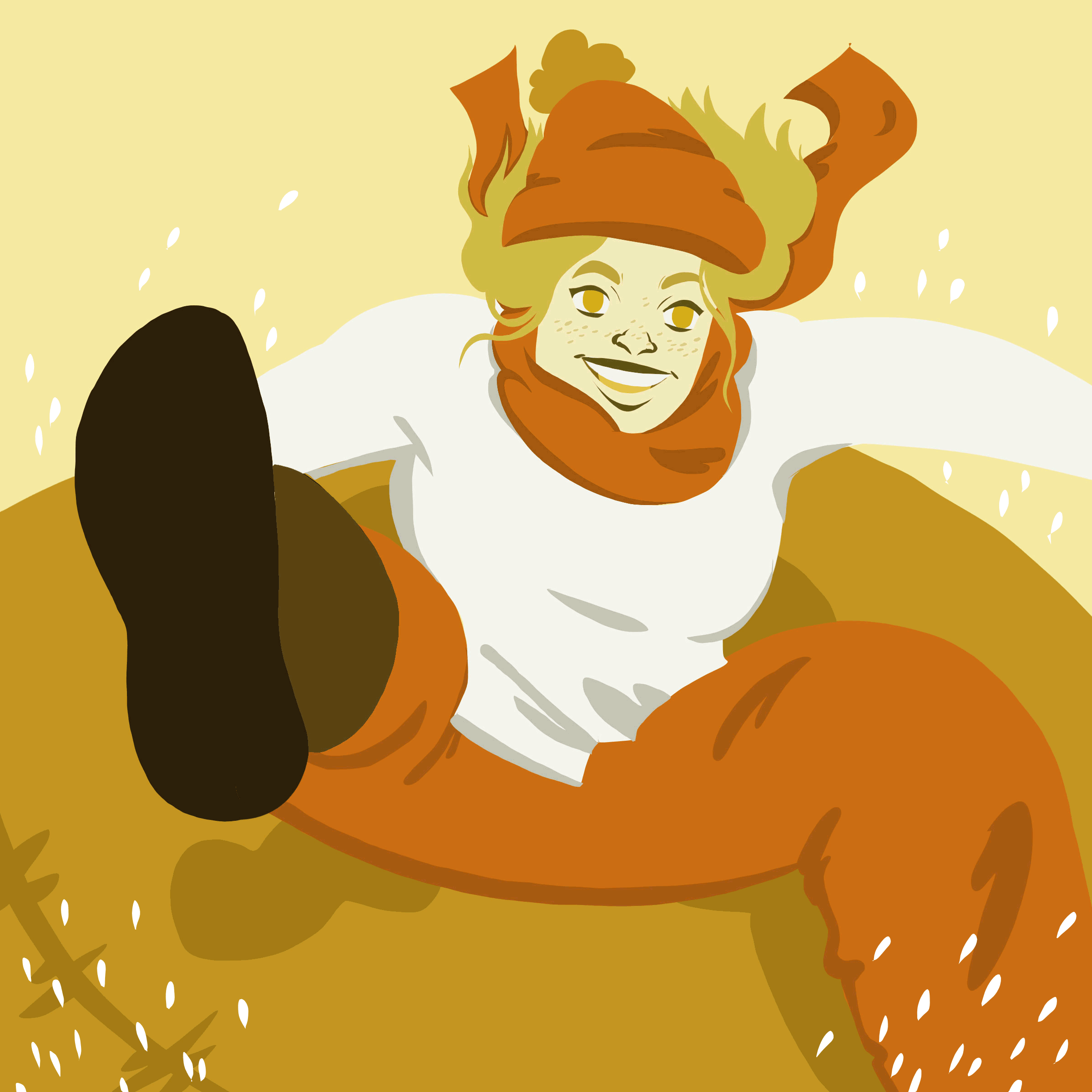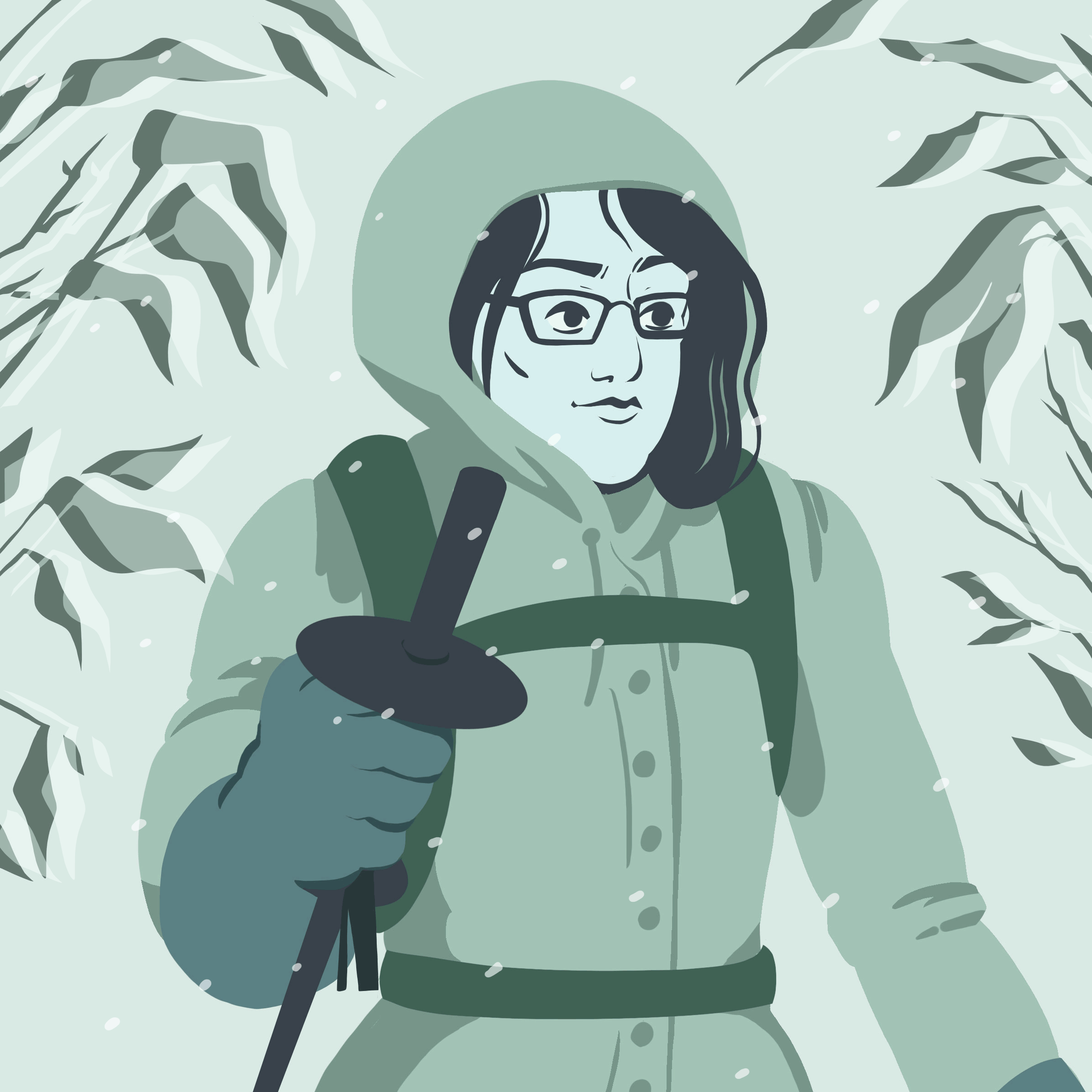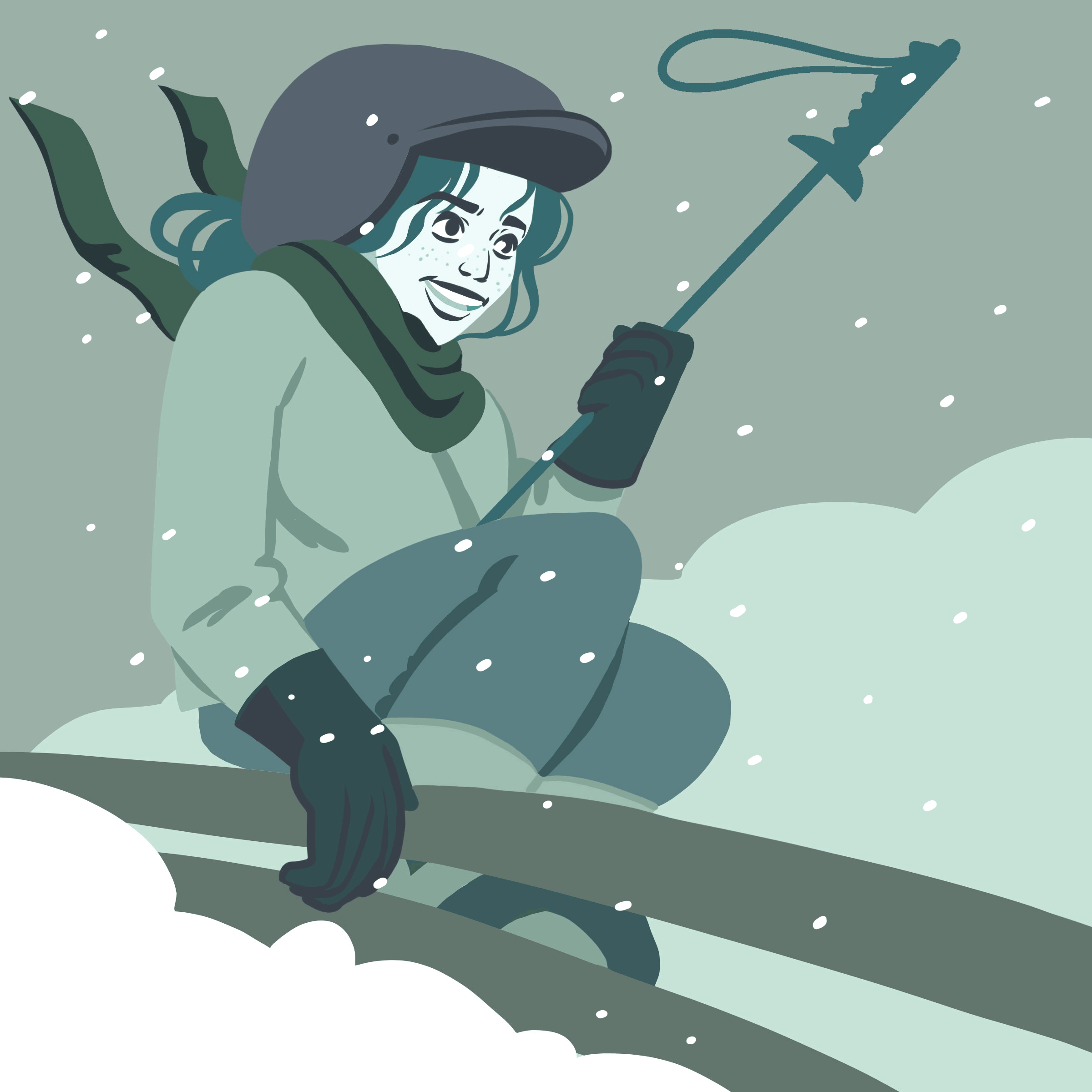The one glimmer of a bright spot in our year-plus time spent under the pull of a pandemic is that it sent us outside and reminded us of how much we need greenery, fresh air, and time away from a screen. According to a report funded by the Outdoor Foundation, the Outdoor Industry Association’s philanthropic arm, 8.1 million more Americans went hiking in 2020 compared to the previous year, and 7.9 million more decided to put up a tent and go camping, and 3.4 million more took a fishing pole to a body of freshwater. The foundation’s report also noted an increase in outdoor participation and a decline in inactivity (despite the siren song of the couch).
For many, leaving the comfort of a couch and beginning the search for something to do beyond the four walls of an apartment or dorm room meant they tried outdoorsy things for the first time. Here, five first-timers share their stories of newbie outdoorsy adventures.
The Snow Tuber

Growing up in sunny Los Angeles, junior Bridget Mahoney experienced few snow opportunities. In fact, prior to going to Syracuse University, Mahoney had only seen fake snow, the kind that covers ski resorts on the West Coast. Syracuse delivered her first, real snowfall. But despite having a year under her academic belt at one of the snowiest campuses in the country, it wasn’t until this year that she decided to up her snow game. The communications sciences and disorders student traveled to the Four Seasons Golf & Ski Center in Fayetteville, N.Y. to try snow tubing. Mahoney signed up for the activity with some friends through the SU Barnes Center Recreation Activities and paid a $5 fee.
When arriving, Mahoney grabbed a tube and stood on a “moving sidewalk” that took her up a hill to a perch with individual paths for each tube to travel down. Mahoney says the experience differed greatly from her expectations — namely in terms of speed and wind. “It was a lot faster than I expected, and I was kind of scared, which is silly, but people were flying down the hill,” she says.
Her friends and she went down more than 10 times, and they even tied their tubes together to go down at the same time. Mahoney says it never became boring because of the different ways to go down the hill — tying tubes together, going on your stomach, or sitting down on the tube. “It was a great way to get outside and get off campus,” she says.
The Mountain Biker

Sophomore magazine and information management technology dual major Daisy Leepson says she tried mountain biking this year so she could stay busy while still being covid safe. “I felt like with covid, it’s now or never, to really try any outdoor activity that I can,” she says. And the school’s outdoors club provided a great way for her and other students to try a range of outdoor activities. In fact, Leepson says the great part about the Syracuse University Outing Club is that it offers activities at different levels.
When she tried mountain biking, she started with the beginner-level bike ride. She and her fellow students biked from South Campus to the quarry near Sky Hall, powering through sand dunes and obstacle courses. Leepson says she enjoyed it because the route brought her through a part of Syracuse she had never seen before.
“I was wanting to try something that was outside of my comfort zone and challenged me and was a fun way to get outside because indoor activities were fairly nonexistent,” she says.
Leepson also went canoeing with the club for a sunrise canoe trip that required a 4:30 a.m. wake-up to get to Jamesville Reservoir in time to greet the sun. “It was a very serene experience, and I’m glad I tried it,” Leepson says. But that was a bit of a one-and-done adventure for Leepson, who doesn’t really love a pre-dawn get-up.
The Hiker

Once quarantine hit, SU junior Elizabeth Kauma struggled to find ways to socialize because her mom is a healthcare worker, and she didn’t want to expose people to the Covid-19 exposure she got from her mom. This prompted her to devise ways to socialize safely and it led her to go on hikes with friends. But when Kauma came home to Pittsburgh, Pa., for winter break, she wondered how she could continue to see friends. Then a friend suggested continuing hiking outside.
But the magazine journalism and art history double major didn’t know what to wear to go hiking in colder weather and was “frantically Googling” to find out what to wear to stay warm. She says she put two layers of leggings, thermals, a coat and even arrived late to the hike because she couldn’t decide between hiking boots or winter boots. Kauma says that she wore way too much clothing, sweated in all the layers (thanks to the heat generated from the exercise of the hilly, snowy terrain), and ended up carrying half of her clothes on the hike.
Despite the initial “freak out” in preparation for the activity, she says it ended up being an enjoyable experience for her (and the next time she went she knew what to wear and brought the correct gear). Kauma says she loves the beauty afforded by a summer hike and the crisp air of a winter outing.
The Cyclist

Sound recording technology major Adam Wolff skipped the elementary-school rite-of-passage of learning how to ride a bike and says his parents just never thought to teach him (even though his dad is a “big biker”). But the activity always hovered in the “want to try” list. But his junior year he decided to check that box and conquer two wheels. His roommates have bikes at school, often ride them from their off-campus house to class, and said they could teach him at some point.
In early fall, boredom from online classes and the struggles of a Covid-19-safe semester forced Wolff to hop on the bike. After falling off the bike and experiencing “one bad wipeout,” Wolff says he picked up the skills after about 45 minutes and with only minimal cuts and scrapes.
Wolff grew up in Connecticut, and his hometown “was very spread out.” His best friend lived 30 minutes away, and so it was uncommon for people to ride their bikes to a friend’s house like he imagines kids do in smaller towns. “I honestly wouldn’t say I felt left out,” he says. “I didn’t think much of it until I came to college and saw people riding bikes all the time.”
In fact, he says he even decided to own his lack of biking ability and leveraged this detail as a “personality trait for awhile,” using it when someone asked him for a “fun fact” during ice breaker activities. But now that he knows how, he’s expanded beyond his neighborhood and even biked the Erie Canal trail with friends. “It’s funny because my dad is a triathlon nut and really good at riding bikes, so I thought it was kind of funny that he never taught me,” Wolff says.
The Skier

It took an avid skier and friend to inspire Frankie Sailer to consider trying the sport. The senior dual major in marketing management and public relations with a minor in psychology took advantage of the friend’s favorite activity, cheap lift tickets, and a group of excited friends to go on a trip to Labrador Mountain, located in Truxton, N.Y., just a half-hour away from SU’s campus. “I had been waiting for the opportunity to do so, and I think that was everything that led up to me actually going,” Sailer says.
Sailer says she considers herself athletic and figured with the balance she possesses and her athleticism, she’d be alright. However, when she first arrived at the mountain, she saw the ski patrol come down with a person who had just broken their wrist. That amped up her nerves a bit. Sailer started out on a chair lift for what she thought was the easiest slope, but it was a bit higher than she expected and there was nowhere else to go but down.
Without a lesson, Frankie went down the hill with just some quick pointers from friends. Her friends told her to “pizza,” “hot dog,” and “french fry,” which serve as classic mental prompts for the direction, position of the skis. But Sailer says “pizza” did little to calm her biggest fear — figuring out how to stop. Every time she increased in speed, she would panic about stopping. In fact, at one point, the steepness of the hill prompted her to remove her skis and walk down the hill.
